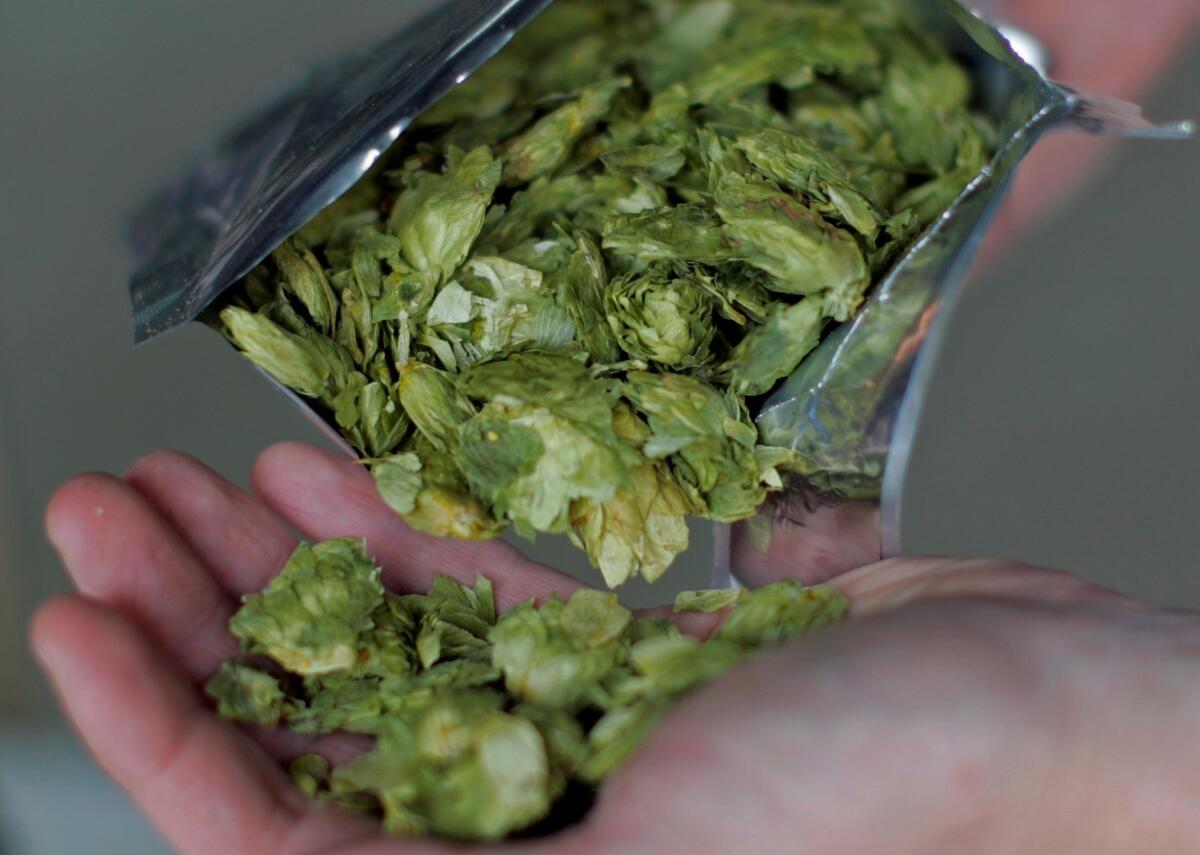Hop-heads delight: New ‘aroma wheel’ helps pinpoint what’s in your favorite IPA

- Share via
Beer fans seem to have an unquenchable thirst for hoppy brews, and the potent botanical responsible for the bitter bite of craft beers also provides much of the flavor and aroma of IPAs and other hop-forward styles. From the herbal, floral character of the classic European hops, to the woody, earthy notes of English hops and the zesty citrus-and-pine-tinged American hop varieties, craft brewers have more options than ever for flavoring their beers.
Hopunion -- a grower-owned supplier of hops for craft breweries across the country -- offers brewers a tool for finding the perfect hop variety to use. The Web-based aroma wheel is also a useful resource for craft drinkers who want to learn more about the flavors that hops provide.
The wheel is split into 11 different wedges labeled with the common hop flavors -- “citrus,” “pine,” “tropical fruit,” “floral,” etc. Click on any wedge and the site displays a long list of hop varieties available from Hopunion that will provide the desired aroma.
The chart is aimed at brewers with detailed information on the acid levels (which provide the bitterness in the final beer), essential oil content, and -- most importantly for hop fans -- a more detailed flavor description for each hop variety.
Interested in honing your palate? The aroma wheel is a useful tool to teach you to recognize the subtle aromas and flavors in craft beer.
Pour yourself a glass of your favorite IPA and consider the aroma and flavors that you perceive. Is it woody or herbal? Spicy or grassy? Dial the aroma wheel to match your impression of the brew then read through the “flavor description” column to find varieties that match what you smell and taste.
Check your work by looking up what hop varieties are used in your sample brew (try the brewery website first, and if that doesn’t work a Google search for “homebrew clone recipes” will surely offer clues). The more you practice, the better you’ll get at being able to discern individual flavors from the beer’s bouquet.
This kind of taste-bud workout is best done with some drinking buddies -- talking through what you smell and taste helps develop your palate and expand the vocabulary you need to describe what you experience.
If you’re looking to dive deep into the world of hops, check out “For the Love of Hops” by Stan Hieronymus. The book covers everything a brewer or beer lover needs to know about the noble hop plant -- from the history of hops to chemistry involved in brewing to detailed flavor descriptions of over 100 varietals.
More to Read
Eat your way across L.A.
Get our weekly Tasting Notes newsletter for reviews, news and more.
You may occasionally receive promotional content from the Los Angeles Times.










